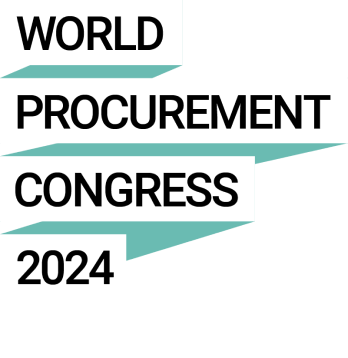Challenge
HS2 is Britain’s new high speed rail line being built from London to the North-West, with zero-carbon trains linking Scotland with Manchester, Birmingham and London. It is the largest infrastructure project in Europe and the most important economic and social regeneration project in decades.
HS2 Ltd. was set up by the UK Government to design and construct the railway and is responsible for procuring and coordinating a supply chain of designers and contractors to deliver billions of pounds worth of contracts. It requires a bespoke delivery organisation to execute the planning, design, and integration of the component parts of the new railway.
As a public funded project, supply chain transparency is critical. This includes the procurement of materials, where they come from, and the conditions in which they were produced.
Supply chain resiliency is also a critical objective for HS2, as the industry contends with challenges including commodities, hyperinflation of material prices, deficits in skilled labour and changing consumption habits.
Securing this level of visibility in the construction sector is challenging for several reasons:
- Much of the work on HS2 is broken into stand-alone projects made up of unique combinations of contractors and suppliers.
- Supply chains are viewed as an area of competitive advantage in a sector known for low profit margins, which discourages transparency horizontally and vertically throughout the supply chain.
- The Procurement & Supply Chain function at HS2 Ltd works with over £15bn worth of Tier-1 construction contractor suppliers, so the challenge is even more pronounced.
To directly address the impact on suppliers delivering these critical works, the Procurement & Supply Chain function requires visibility deep into multi-tier supply chains. HS2 Ltd needs this visibility to proactively manage and understand critical risks deep within the supply chain; to understand the full impact of these risks and develop intervention strategies in collaboration with Tier 1 contractors.
What is HS2?
HS2 will form the backbone of the UK’s transport network. It will significantly improve connectivity in the North and Midlands and will also integrate with the existing rail network serving stations into Scotland. 170 miles of new high-speed line is already under construction between Crewe and London, employing almost 25,000 people. In total, the Government is planning over 260 miles of new high speed line across the country.
Approach
To address supply chain transparency, a new initiative, “SCM+”, was developed in the second quarter of 2021. A group of five people formed an extension of the existing 10-person Supply Chain Management team within the 200-strong Procurement & Supply Chain function to focus on this. The team commenced work in September 2021 against a set of key objectives and deliverables, including:
- Determining high-risk areas of the supply chain
- Engaging with suppliers to collect the necessary data
- Developing a risk methodology to assess suppliers
- Creating dashboards to display supplier and contract information and risk scores
Determining high-risk areas of the supply chain
Determining high-risk areas of the HS2 supply chain was achieved by working with Tier 1 contractors, through a Collaboration Hub facilitated by the SCM team that aims to:
- Pro-actively manage capacity within the marketplace
- Leverage collaborative procurement opportunities
- Develop the supply chain
- Share best practice on the effective management of uncertainties such as the Covid-19 pandemic and the Ukraine-Russia crisis.
Critical contract data is received from the Tier 1s monthly as outlined in their respective works information documents which provides the SCM team with visibility of their tender event schedules and future procurement pipelines and suppliers. It is through this data that the SCM team determined critical categories by considering several factors:
- Assessing the contracts against the HS2 definition of a “critical” contract;
- Understanding whether the category was operating in an industry with inflationary or availability pressures;
- The percentage of work that had been completed; and
- The forecast spend remaining on the contract.
Using this logic, 40 critical categories were identified, prioritised, and presented to the Collaboration Hub. The Hub, together with HS2 then collectively reviewed the categories that would require a further deep dive. This review was based on their collective procurement programme, the supply chain constraints they are facing operationally and the contracts, which were being tendered where inflationary and availability pressures are noted during the tendering process.
Through this exercise, piling was identified as an especially high-risk category and so a pilot supply chain mapping initiative focused on this area. This covers the process of pilling foundations through the ground to provide more structural strength to the soil underneath, including the material, the plant, labour and logistics of the end-to-end construction process.
Other categories such as precast concrete, timber, formwork, reinforcement steel and concrete (FRC) as well as structural steel and drainage were also identified as critical areas of focus for SCM+ and where much of the early effort of the team was focused from October 2021 – March 2022.
Engaging with suppliers
The SCM+ team developed a new, consistent method to engage with multi-tier supply chains, combining a commitment to data-driven decision making with one-to-one supplier engagements.
This is a new approach for construction projects, given their unique nature – where each supply chain is formed for the specific delivery of the HS2 programme. It was therefore imperative that suppliers understood the overarching objective of their meeting and the wider initiative.
Suppliers were understandably wary given the traditional approach adopted within construction of a closed book approach, where suppliers manage risks through contractual routes. This initiative aims to change the way in which construction projects deal with risks by adapting the approach and working with suppliers to openly discuss risks for the overarching benefit of the programme.
In order to achieve this, the SCM team proceeded to hold one-to-one meetings with every Tier-2 supplier and determined the high-risk Tier-3 suppliers that would allow them to engage directly and build trust while gathering the information required.
This format complements existing one-to-one meetings that are held with Tier-1 suppliers prior to the commencement of each Tier 1 Contract through the extension Market Engagement strategy incorporated by HS2 Ltd to determine appetite for each Tier 1 package and test the commercial and technical strategy that is developed by the HS2 Ltd procurement team.
In September 2021, the team developed a template to ensure a consistent, objective approach was taken to each of these one-to-one meetings. The template includes sections for recording both qualitative and quantitative data, allowing for the two parties to have a broad discussion but also focus on critical data. Topics of discussion include suppliers’:
- Overarching services
- Financials
- Contract split of labour, plant and materials
- Supply chain risks impacting their delivery
The risks gathered as part of this process are collated, trended and collectively presented. This enables HS2 and the supplier’s Tier 1 Contractor to gain a greater understanding of the suppliers directly delivering the project across the UK across 5 tiers within the supply chain and their risks. Over the course of this Supply Chain Mapping exercise, over 120,000 data points have been established, which are all centrally stored and mapped against each supplier, whether they were directly engaged or mapped in PowerBI.
Developing the risk methodology
In parallel to the supplier engagement and mapping, a risk methodology (see below) was designed which applied a risk rating for each contract outlined by each supplier in their one-to-one meeting. This considers:
- The supplier’s financial position, using data from Dun & Bradstreet’s Failure Score
- Their capacity (across the entire HS2 programme), using the methodology adopted by the Cabinet Office to determine whether suppliers indicate over exposure
- Their capability risks, which looked at four key areas: complexity, criticality, lead time and supply chain constraints
The concept of Capability Risk is new. This is based on the supplier’s perception of the contracts they are delivering. This allows suppliers to highlight wider issues within the supply chain, such as labour shortages and logistics constraints, that may not be detected by conventional methods which look at the supplier’s financial risk and not the risk associated with delivery. Suppliers are asked to rate their contracts on the following four factors:
- Complexity of the contract
- Whether the contract is a critical element of the “accepted programme” (a concept in civil engineering contracting)
- Length of lead times
- Supply market constraints – including price rises, haulage issues and capacity shortages
The combined scores provide a score out of 100, which then feeds into the overall supplier risk rating.
The process of developing this Risk Methodology was then tested against the data captured within the one-to-one meetings to assure trends raised and high-risk suppliers were in fact being determined as “high-risk”.
Given the size of the team and scale of the initiative undertaken, the team ensured that each “contracting authority” – the supplier that owns each contract throughout the supply chain – ranked their contracts. This score is then overwritten if the supplier of a particular contract is then directly engaged (and they then ranked themselves). This ensured that there are Risk Ratings for all contracts held by all suppliers, regardless of the team’s capacity to engage on a one-to-one basis.
In summary, the SCM+ team ensured that they could follow risk through the supply chain, in using an approach that enabled HS2 to achieve Risk Ratings for many more suppliers than they could engage directly with the team of five over a six-month period.
Building dashboards
A major area of focus for the five person SCM+ team was establishing databases to store the critical information about suppliers. This needed to align with the existing database developed by the Supply Chain Management Team.
Once the new database was trialled, tested, and secured the team then developed dashboards to present tens of thousands of data points in a consolidated, valuable way. The dashboards are visible and interactive through Power BI and can be filtered by available categories and topics including high-volume or high-risk suppliers.
These dashboards reflect the location, size, business and chain in which they sit within the supply chain and can be used to showcase the Risk Rating of each of the 650 contracts already determined.
To enhance HS2’s transparency, a version of the dashboard has also been made available to the public, using Tableau, called the Supply Chain Map. The public Supply Chain Map now includes suppliers found deeper than Tier 2. Users can search for suppliers by region or constituency. For data protection reasons, micro and small businesses’ names are redacted.
What HS2 includes in its dashboards
HS2 developed three main dashboard views for use internally: Supplier Profile, Contract Overview and Supply Chain Map.
Supplier profile:
The supplier profile provides visibility into:
- Headquarter location
- Number of employees
- Turnover
- Profitability and solvency ratios
- Levels of utilisation
- Contracts with supplier, including value
- Financial, capacity and capability risk scores
- Dunn & Bradstreet Delinquency, PAYDEX and Failure scores
Contract overview:
The contract overview provides visibility into:
- Contract scope
- Contract dates
- Different projects within contract by spend and supplier
- Contract risks and possible mitigating actions
Supply chain map:
The supply chain map provides visibility into:
- Location of multitier suppliers
- Suppliers by tier
- Suppliers by risk rating
- Volume of suppliers by category
Outcome
Results
SCM+ is a highly novel project for the construction sector. It put HS2 in a significantly stronger position to cascade information and develop suppliers further down the supply chain who may not have known they are supplying to HS2. By identifying and engaging with critical suppliers, HS2 can encourage suppliers to align their core values and propositions to best place themselves to win future work on other HS2 projects, develop their capability and support the UK economy.
The company has already uncovered over 600 new contracts down to Tier 5 being delivered by 250 new-found suppliers covering over £1.5bn worth of contracts. For the four critical categories already delivered (piling, timber, precast concrete and FRC), the team has mapped the suppliers to a tier-4 level, covering over 120,000 data points. This was all achieved within the first six months of the project.
This initiative has given HS2 Ltd unprecedented insight into hundreds of critical suppliers and a collective view of the constraints impacting the efficient flows of plant, labour and materials to HS2 sites. It is only by understanding the issues and risks that HS2 can ensure best value to the taxpayer by proactively managing risks.
The SCM+ initiative has also allowed issues relating to client demand to be more easily identified and managed collaboratively where previously these could have negatively impacted cost and time schedules.
Next Steps
Supply Chain transparency requires a commitment to continuous improvement across the value chain. This initiative has proven that HS2’s suppliers are enthusiastic and open to providing information outside of their contractual obligation. The response to the initiative and the data captured in a short time has driven this team to take this initiative and further develop the approach over 2022 with the overarching aim of leading other programmes to adopt the same process.
Many lessons have been learned, and there have been iterations of the process to ensure it is fit for purpose and aligns with the wider Supply Chain Management team who work to monitor, manage, and mitigate Tier 1 and critical Tier 2 risks across the HS2 portfolio.
Having captured data, assured its use, reported on the outcomes and looked at the risks, it is paramount that this information is used to ensure the findings lead to actions across HS2. The lessons learned presented by suppliers are being shared and communicated to teams and key stakeholders across HS2 who are developing future strategies for Phase Two of the project (linking the West Midlands to the Northwest).
Having spent six months delivering the first core objective, namely “transparency”, the next objective to “cascade and develop suppliers” will be developed throughout 2022:
- Ensure direct engagement and support to suppliers who may have been previously unaware of their existence within the HS2 Supply Chain. The Team is developing a “welcome pack” which outlines HS2 Key Values, Strategic Goals, and a range of support for suppliers in relation to EDI, Skills and Education, HS2 Jobs Brokerage as well as our Net Zero ambitions.
- Develop and showcase Tier 3+ Case Studies of some of the impressive work that is taking place within these businesses. These will be publicly available via the HS2 website and shared with suppliers for them to learn from others and develop their own best-in-class approaches.
The demand for transparency is highly unlikely to decrease. HS2 Ltd will continue to drive and innovate by developing an approach which can be applied to future phases of the project, as well as adopted by others, to gain transparency, collect risk data and support suppliers who are delivering major infrastructure projects in the ever changing, complex and challenging market.
Advice for others
The SCM team shared the following advice for ensuring that supply chain visibility projects are delivered effectively:
- Emphasise key objectives: Bringing an initiative into a live project, with existing contracts and many different stakeholders from a variety of functions across a business is not easy. Where the team faced challenges or pushback from stakeholders they described and explained the growing importance of supply chain transparency, drawing on evidence from thought leaders across the industry.
- Communication: The team carried out a vital HS2-wide stakeholder mapping exercise to assess who needed sight of the work that was developed and the outcomes that were found. These channels were found, people were contacted, and the initiative was explained on an individual basis to ensure feedback, thoughts and ideas were presented back to the team.
- Bring people with you: Significant work went into bringing suppliers and wider HS2 stakeholders on the journey. It is only with their buy-in that this initiative gained so much traction and the reason why it will continue into 2022 and become part of the overarching approach to operationalise the Supply Chain Management function.


















